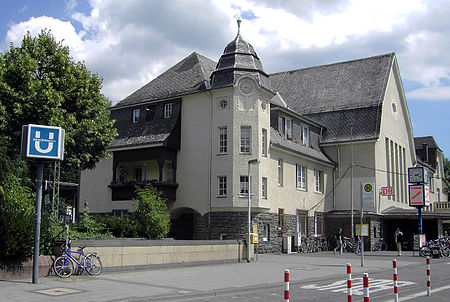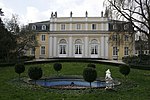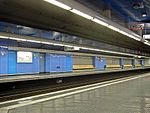Bonn-Bad Godesberg station
Art Nouveau architecture in GermanyArt Nouveau railway stationsBonn Straßenbahn stationsBuildings and structures completed in 1908Railway stations in Bonn ... and 1 more
Railway stations in Germany opened in 1855

Bonn-Bad Godesberg station is on the Left Rhine line (German: Linke Rheinstrecke) in the Bonn district of Bad Godesberg in the German state of North Rhine-Westphalia. It is a four-track through station, which does not have a “home” platform attached to the station building. Instead, it has two through and overtaking tracks on two island platforms, with one platform numbered 1 and 4 and the other 2 and 3, which is unusual in Germany, but occurs several times on the Left Rhine line.
Excerpt from the Wikipedia article Bonn-Bad Godesberg station (License: CC BY-SA 3.0, Authors, Images).Bonn-Bad Godesberg station
Moltkestraße, Bonn Bad Godesberg
Geographical coordinates (GPS) Address Nearby Places Show on map
Geographical coordinates (GPS)
| Latitude | Longitude |
|---|---|
| N 50.683694444444 ° | E 7.15925 ° |
Address
Moltkestraße
53173 Bonn, Bad Godesberg
North Rhine-Westphalia, Germany
Open on Google Maps









